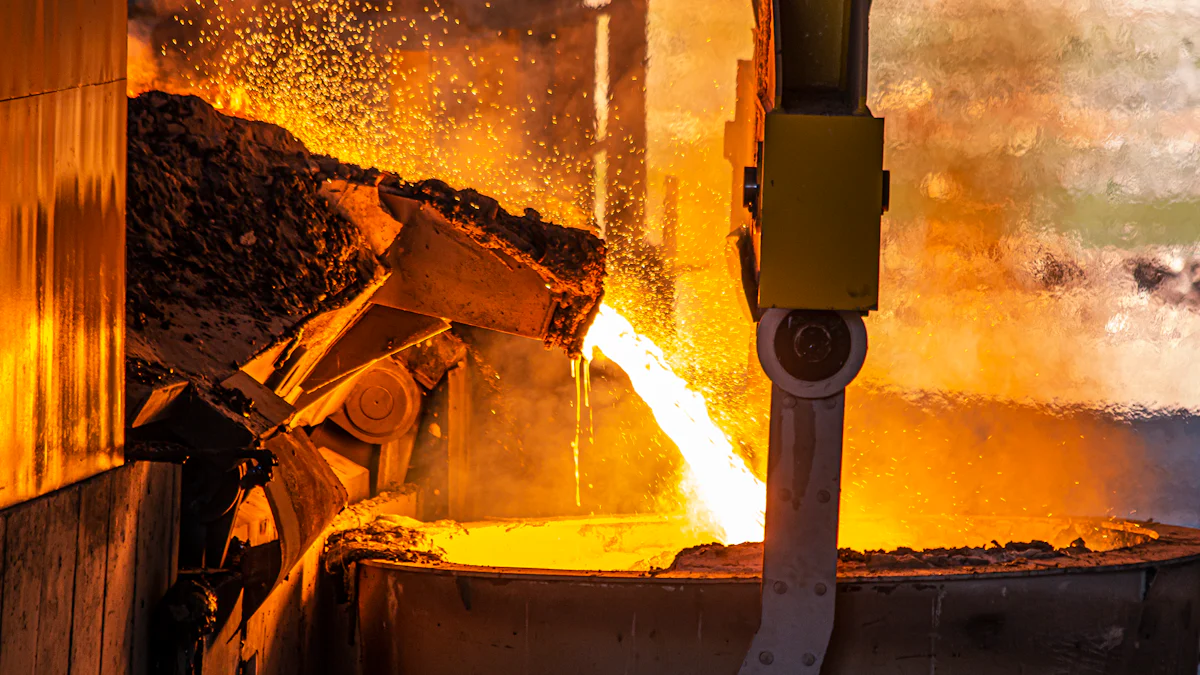
Manifolds play a crucial role in engine performance. These components channel exhaust gases away from the engine, impacting efficiency and power output. A cast iron exhaust manifold offers durability and heat retention, making it a popular choice. However, advancements in material technology have introduced alternatives like cast steel, which provide enhanced strength and corrosion resistance.
Importance in Engine Performance
Impact on Efficiency
Manifolds significantly influence engine efficiency. Properly designed manifolds enhance the flow of exhaust gases, reducing back pressure. This reduction leads to improved fuel efficiency and increased power output. A study highlighted that steel manifolds, especially stainless steel versions, can reduce heat loss, leading to increased horsepower and performance.
Material Properties
Cast Iron Exhaust Manifold
Composition and Characteristics
A cast iron exhaust manifold consists of iron mixed with carbon and silicon. This composition provides excellent heat retention and durability. The thick walls of cast iron help in insulating the manifold, which reduces under-hood temperatures. Cast iron conducts heat better than steel, which aids in maintaining a stable engine temperature.
Advantages of a cast iron exhaust manifold include its cost-effectiveness and longevity. Cast iron manifolds are less expensive to produce compared to other materials. The durability of cast iron ensures a long lifespan, making it a reliable choice for many vehicles. The material’s ability to withstand high temperatures without significant expansion helps maintain the integrity of the exhaust system.
Disadvantages involve performance limitations. Cast iron manifolds are heavier and can restrict exhaust flow, which may reduce engine power. Although ceramic coatings can enhance performance slightly, cast iron still produces less power than tubular steel headers. The thickness of cast iron also means more weight, which can affect overall vehicle performance.
Cast Steel
Composition and Characteristics
Cast steel manifolds consist of iron alloyed with carbon and other elements such as manganese. This composition results in a stronger and more corrosion-resistant material compared to cast iron. Cast steel manifolds are often used in high-performance applications due to their strength and ability to handle extreme conditions.
Advantages of cast steel include its superior strength and resistance to corrosion. The material’s ability to withstand thermal expansion and contraction makes it suitable for high-performance engines. Cast steel manifolds can reduce heat loss, which enhances horsepower and overall engine performance.
Disadvantages involve higher costs and potential issues with thermal expansion. Cast steel manifolds are generally more expensive than cast iron options. The material’s tendency to expand and contract during heat cycles can lead to problems with bolts or studs loosening over time. Despite these challenges, the performance benefits often outweigh the drawbacks for enthusiasts seeking maximum power output.
The comparison between cast iron and cast steel manifolds highlights key differences in performance and application suitability. Cast iron offers durability and cost-effectiveness, making it ideal for heavy-duty vehicles. Cast steel provides superior strength and heat dissipation, enhancing high-performance engines. Choose cast iron for durability and affordability. Opt for cast steel for enhanced performance and strength. Consider specific needs and applications when selecting the right manifold material.
Media Contact
Company Name: Ningbo Werkwell Intl Trading Co., Ltd.
Email: Send Email
Address:Room 1511 Yuehu Building, 16 Nanzhan Road East
City: Ningbo 315012
Country: China
Website: https://www.werkwell.com/
